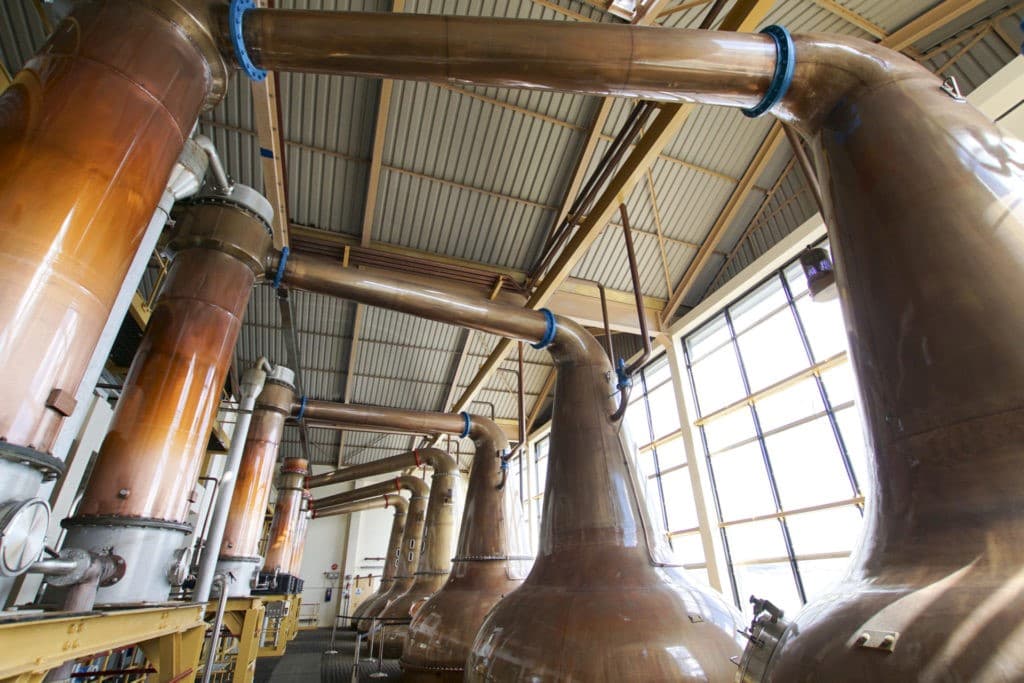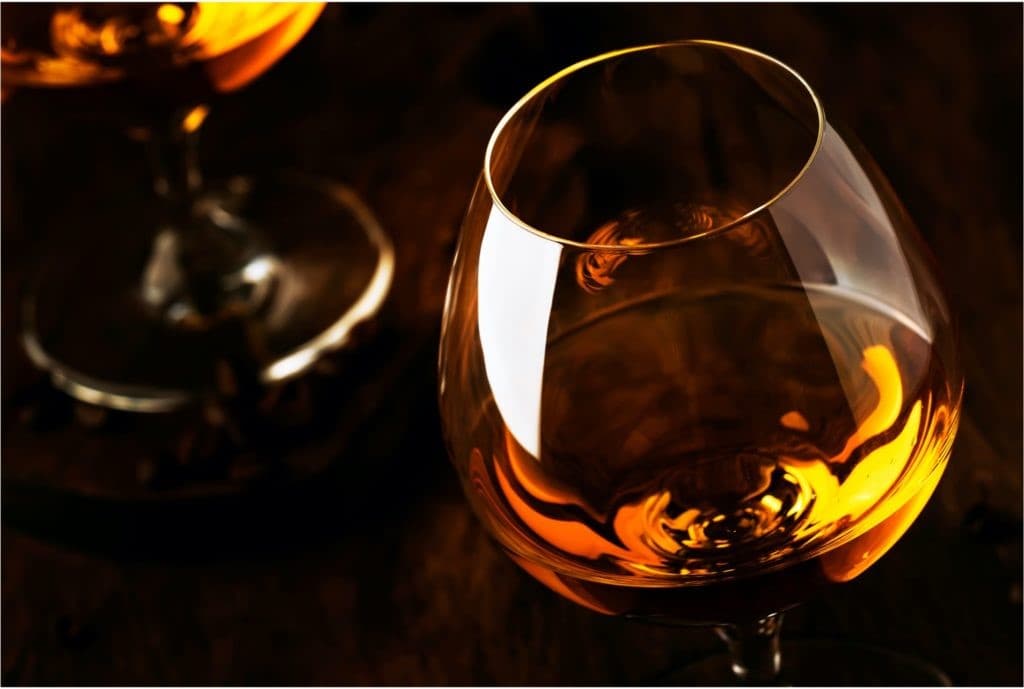
A definitive guide to Cognac brandy | Cognac production, classification and grape varieties

On the banks of the Charente River, situated immediately north of Bordeaux, growers cultivate over 79,000 hectares of vineyards used in the production of a very special brandy. For centuries, distilled wine (eau de vie) has been aged in French oak barrels, transforming white spirit into a complex and velvety drink called Cognac.
The spirit is named after the historic town, a tranquil destination surrounded by verdant and timeless countryside. There is great diversity in the region, with major internationals like Rémy Martin, Martell, Courvoisier, Pierre Fernand and Hennessy, juxtaposed against family-owned businesses. Cognac brandy was bestowed appellation status in 1936 (one of the first in France), although the geographical boundaries of the vineyard were actually delimited by government decree in 1909.
Click on a link to jump to that section:
Producing Cognac
There are four stages required to make Cognac brandy: fermentation; distillation; maturation and blending. After the harvest, the white grapes are transformed into acidic base wine via fermentation. This white wine will then be distilled to make eau de vie. The method of distillation is strictly controlled by the Cognac authorities.
Regulations state that only double-distillation can be employed to make Cognac, using a “Charentais” copper pot still; the Cognac houses follow the rules diligently. As the wine is heated, alcohol vapour will pass through the copper still, changed back into liquid by passing through a condenser that is cooled by water. This first process creates a spirit with an alcoholic strength of about 20% ABV, it will then be distilled again.
The second distillation removes the toxic elements of the spirit along with the earthy characteristics from the wine to give the Cognac a finer taste. The high-quality spirit from the second distillation, known as the cut, will be condensed in a second vessel. This spirit will be put into oak casks to make Cognac. In contrast, Armagnac is distilled once in a column still. Single-distilled spirits have more weight and spicy characteristics, due to the presence of more impurities; however, personal preference should rule the day.
Eau-de-vie will be matured in an oak cask to impart flavours such as vanilla, toast and spices and later transferred to glass vessels to continue ageing. Cognac can age for two years to over a century for the most luxurious brands like Richard Hennessy and Martell Cognac. When eau-de-vie is first stored in the oak barrel, it will typically have an ABV of about 72%. Interestingly, each year some alcohol evaporates through the barrel staves naturally reducing the total alcohol – the cellar master will call this ‘the angels’ share’. In addition, upon bottling, water is added to Cognac to lower the alcohol level to 40 per cent. However, certain houses make higher strength Cognac, that can range from 50%–60% abv.

Sub-appellations
The area under vine is divided into six sub-appellations: Bois Ordinaires; Bons Bois; Fins Bois; Borderies; Petite Champagne and Grande Champagne. The latter appellations, despite the nomenclature, have nothing to do with the Champagne region where sparkling wine is produced. Grande Champagne Cognac is argued to be the finest, however, every zone is an important part of the Cognac equation.
Bois Ordinaires
The geographical area is very expansive, and yet it produces less grapes than any other Cognac cru. This is because the great swathe of land that extends from La Rochelle to the mouth of the Gironde River is very sparsely planted with vines. However, wine produced here contribute fruit and aromatics to Cognac blends.
Bons Bois
The Bons Bois vineyards flank the town of Cognac. Like Bois Ordinaires, much of the potential land is not used to grow grapes, however, the terroir is more varied. There is an abundance of heavy clay soils, in addition to bands of chalk and limestone in the southern reaches of the zone. The top sites yield wine with good acidity – a vital component in Cognac brandy.
Fins Bois
The largest of Cognac’s six crus, the bulk of Fins Bois’ vineyards stretch north and east from the pretty town of Jarnac. The maritime climate and calcareous soils are ideally suited to producing white wine with moderate levels of alcohol and fresh acidity. Like all Cognac, Ugni Blanc dominates plantings in Fins Bois, with a small percentage of Colombard and Folle Blanche.
Borderies
Situated to the northwest of Cognac town, Borderies covers a small geographical area. Yet there are approximately 4000 hectares under vine, ensuring that the zone produces far more wine than Bois Ordinaires. Soils vary from sandstone to clay-limestone, the latter yielding higher-quality French wine with full-bodied and aromatic eau de vie, noted for their aroma of roasted hazelnuts.
Petite Champagne
One of Cognac’s most celebrated crus, Petite Champagne yields superior grapes from first-rate terroir; well-drained calcareous and sandstone soils. It is said that Petite Champagne eau de vie is among the finest in Cognac brandy, with deep aromatics and good structure.
Grande Champagne
Cognac’s ‘Grand Cru’ vineyards are located to the south of the district’s capital. Just over 13,000 hectares of vineyards yield white wine capable of producing extremely long-lived and powerful eau de vie. The Grande Champagne chalky terrain dates back to the Jurassic period, when organic matter was deposited on the (then) Atlantic seabed, compacted and transformed into the sedimentary rock found today.
Grape varieties
The Cognac rules permit six white grapes in the final blend: Ugni Blanc, Colombard, Semillon, Montils, Folignan, and Folle Blanche. Varieties are selected based on their ability to produce wine with high acidity and a low abv. Wines with a low abv can be distilled for longer before they reach 72 per cent by volume, acid is a fundamental component of the spirit, but it is also necessary to safeguard against spoilage.
- Ugni Blanc– the most important variety in Cognac brandy, Ugni Blanc is vigorous and not difficult to grow, it produces light and acidic white wines that are ideally suited to distillation.
- Colombard– one of the most prolific white varieties in western France, Colombard is appreciated for its robust nature and reliable crop. It produces excellent eau de vie, with strong aromas and good body.
- Folle Blanche– this variety can yield spicy and potent eau de vie, however, Folle Blanche is notoriously prone to rot in bad weather.
- Semillon– the noble white grape of Bordeaux is now only occasionally used in Cognac blends, albeit it can produce full-bodied and generous eau de vie.
- Montils– seldom used in Cognac production, Montils’ reputation suffered due to a tendency to yield wines with lower acidity than Ugni Blanc. However, there are a few growers who continue to champion the grape.
- Folignan– a maximum of 10% Folignan is allowed in the final Cognac blend, a man-made cross of Ugni Blanc and Folle Blanche. It has proven its ability to make aromatic eau de vie so with time, the total volume permitted may increase.
Cognac blending and classification
Blending is a fundamental part of the Cognac recipe. Some barrels may contain five-year-old eau-de-vie, while other casks are proud centenarians. The entry level, youngest cognac labels, VS (Very Special), are the result of blending at least two different eau-de-vie together, aged for a minimum of two years. VSOP Cognac succeeds VS cognac, followed by Extra Cognac. XO Cognac (Hennessy XO, for example) is older still, with XXO Cognac being the oldest. Some houses prefer to blend gradually over a number of years, while other producers compose their final blend before bottling.
The Cognac hierarchy
|
Cognac classification |
Minimum age of eau-de-vie* |
|---|---|
| Very Special (VS) | Two years |
| Very Special Old Pale (VSOP) | Four years |
| Extra Cognac | Ten years |
| Extra Old (XO) | Ten years |
| Extra Extra Old (XXO) | Fourteen years |
*These are minimum ageing requirements – many houses exceed the legal stipulations.
Enjoying Cognac
Cognac was traditionally viewed as the ultimate digestif. Yet Cognac, like so many spirits, has been diversifying its image of late. Although heritage and tradition are of supreme importance to Cognac’s leading houses, producers have also been exploring the world of Cognac cocktails. Many Cognac brands are capitalising on the continuous opening of new cocktail bars, bringing new products to the market for use in cocktails. These products are often subtler, with flavour that can be brought out with different mixers and pairings. Despite what you may have heard, Cognac is as versatile as any luxury spirit you care to mention. There is a brand for every occasion and context.
Frequently asked Questions
How do you drink cognac?
Cognac is usually drunk neat, in a tulip glass. However, recently people have been experimenting with drinking Cognac, many will mix it with water, ice, freeze it or combine with tonic or ginger ales to bring out different aromas.
What is the difference between Cognac and brandy?
Cognac is a type of brandy made according to specific rules in a defined geographic area (Cognac – France). It is distilled twice, unlike the majority of other types of brandy.
What mixes well with Cognac?
Cognac can be drunk neat or with a mixer. Popular combinations include Cognac with ginger ale, tonic soda water. More adventurously, Cognac can be used in cocktails such as a sidecar, containing cognac, lemon juice and another French spirit, Cointreau.




